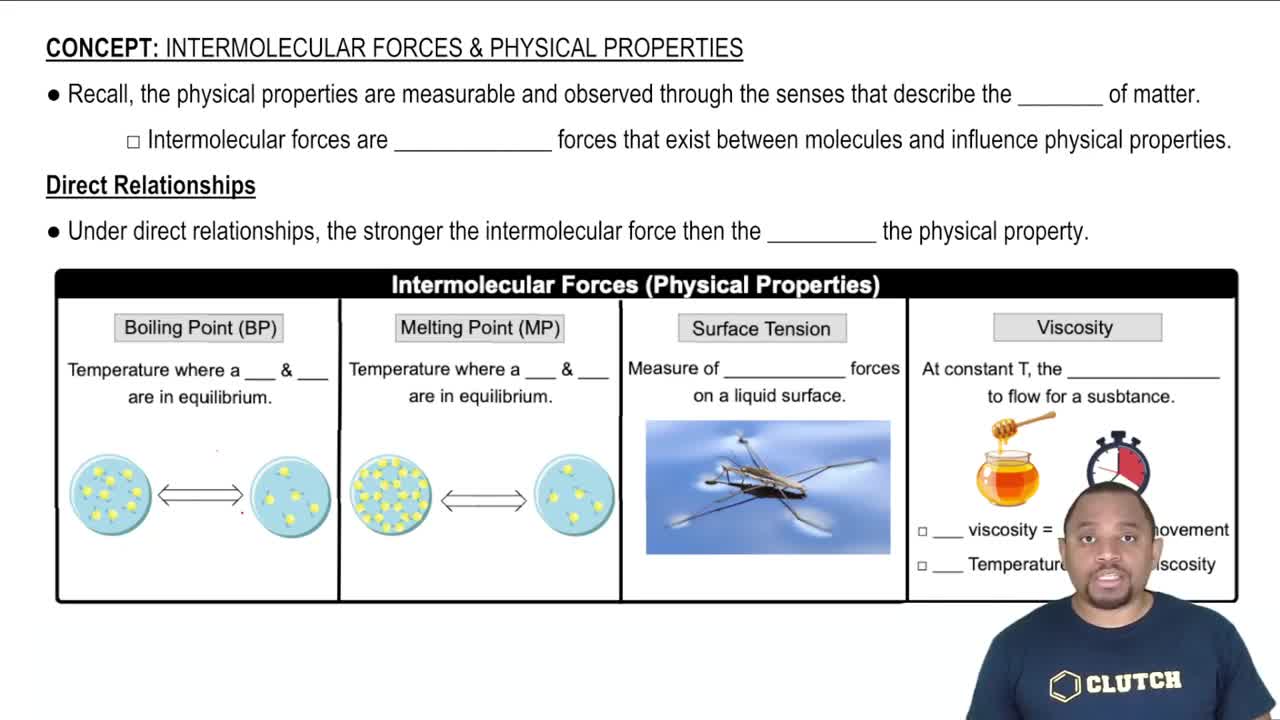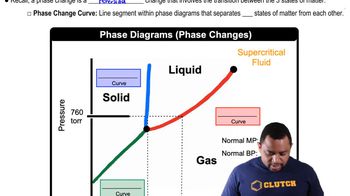Here are the essential concepts you must grasp in order to answer the question correctly.
Viscosity
Viscosity is a measure of a fluid's resistance to flow. It is influenced by the interactions between molecules in the liquid. Higher viscosity indicates a thicker fluid that flows more slowly, while lower viscosity corresponds to a thinner fluid that flows more easily. Understanding how temperature affects viscosity is crucial for explaining the behavior of liquids under varying thermal conditions.
Recommended video:
Intermolecular Forces and Properties
Temperature Effects on Liquids
Temperature significantly impacts the physical properties of liquids, including viscosity. As temperature increases, the kinetic energy of molecules rises, leading to reduced intermolecular forces and typically lower viscosity. However, at certain temperatures, such as the transition points in sulfur, structural changes or phase transitions can occur, resulting in unexpected viscosity behavior.
Recommended video:
Temperature Conversion Example
Phase Transitions
Phase transitions refer to the changes in the state of matter, such as from solid to liquid or liquid to gas, often accompanied by significant changes in physical properties. In the case of sulfur, the increase in viscosity at around 160 °C may indicate a structural change in the molecular arrangement, while the decrease above 200 °C could suggest a transition to a less viscous state, possibly due to further molecular rearrangement or breakdown.
Recommended video:
Phase Changes in Diagrams
 Verified step by step guidance
Verified step by step guidance

